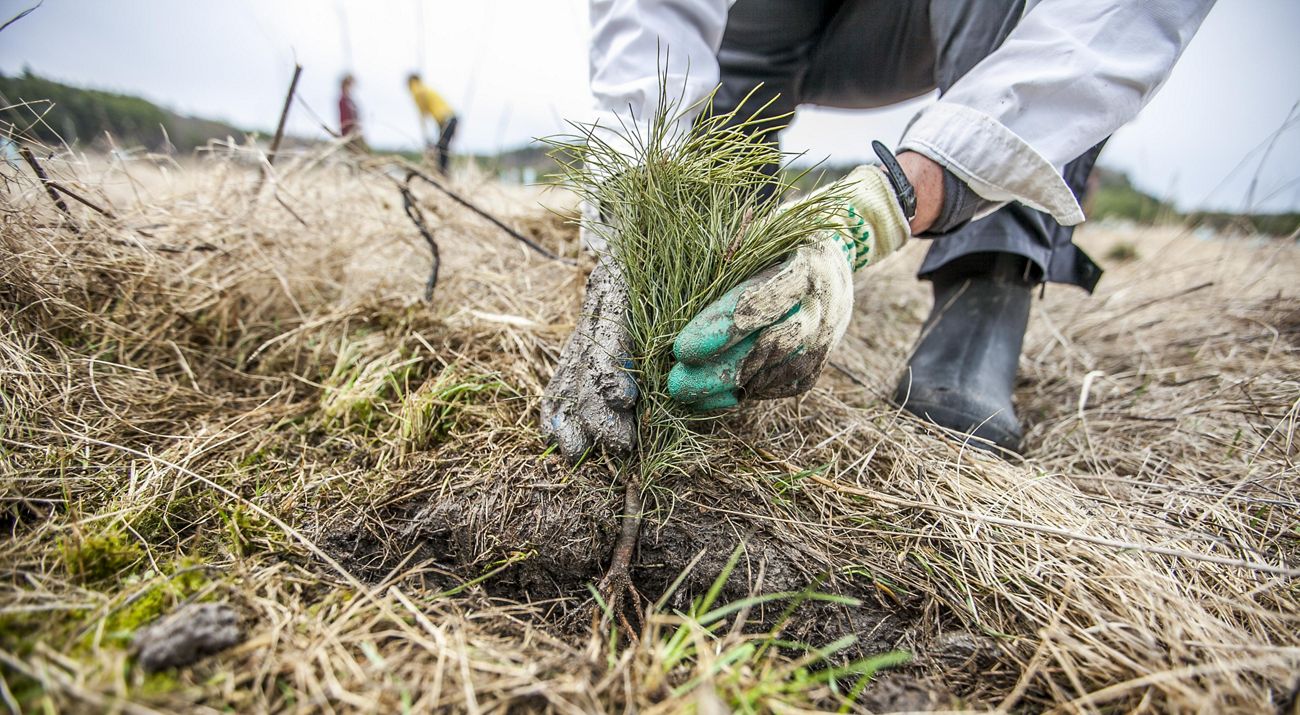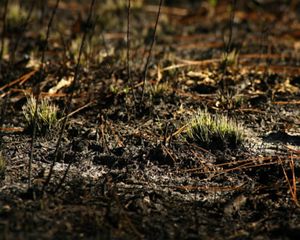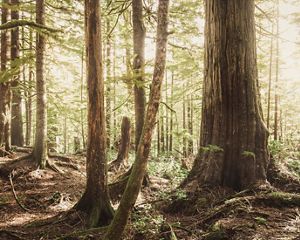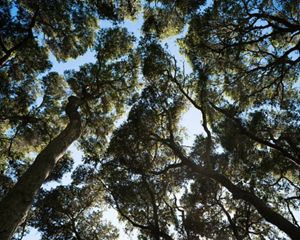Mapping Reforestation Opportunities in the U.S.
Planting trees is not the sole solution to climate change. But done right, reforestation can help capture significant amounts of carbon.
I've stopped weeding out the tree seedlings that routinely pop up in the garden beds behind my Maryland home. Instead, I let red buds and oaks stretch towards the sky. It was not laziness, but the birth of my second daughter that triggered the decision.
My day job is to worry about providing the best science for tackling climate change and my all-the-time job is to worry about my daughters’ future. During a time when many of us felt pretty helpless in the face of a challenging news cycle, turning my postage stamp yard into a mini urban reforestation project represented something I could do. I could let those tree seedlings grow, pulling carbon dioxide from the atmosphere and helping to constrain our climate crisis so that my daughters, and all of our children, can inherit a world where both people and nature can thrive.
Restoring Forests as a Natural Climate Solution
I’m not the only one with trees on the brain. Enthusiasm for reforestation as a climate solution is growing, and for good reason. Forests represent a powerful opportunity to pull carbon dioxide out of the atmosphere, helping to cool our planet while also providing clean air, clean water and habitat for wildlife. We are increasingly seeing reforestation commitments from nations, corporations and individuals that are united by a desire to create a better future.
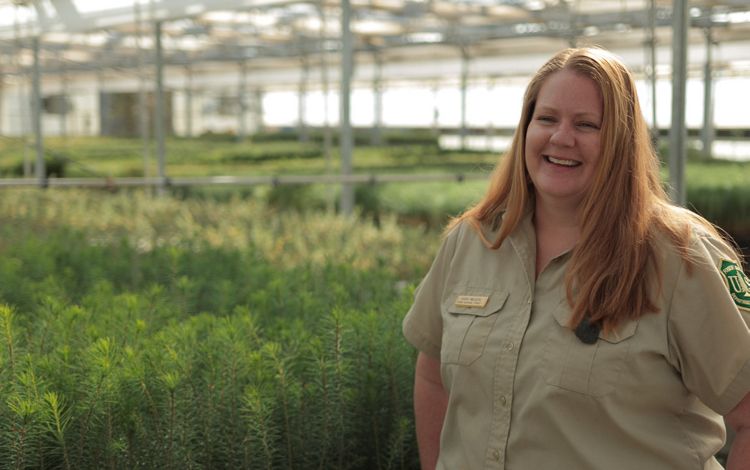
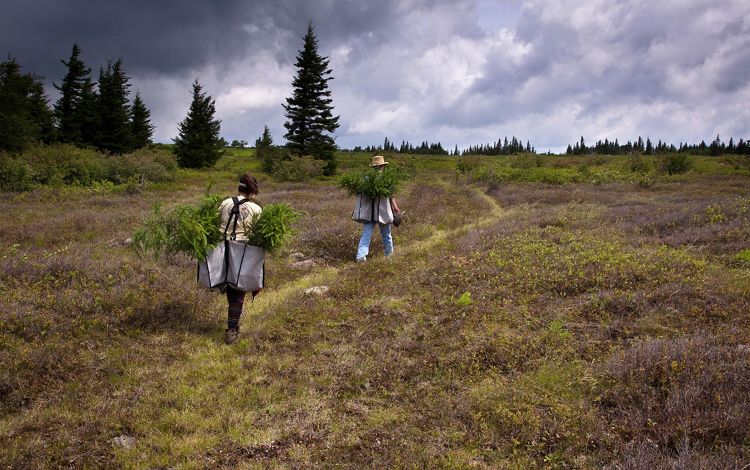
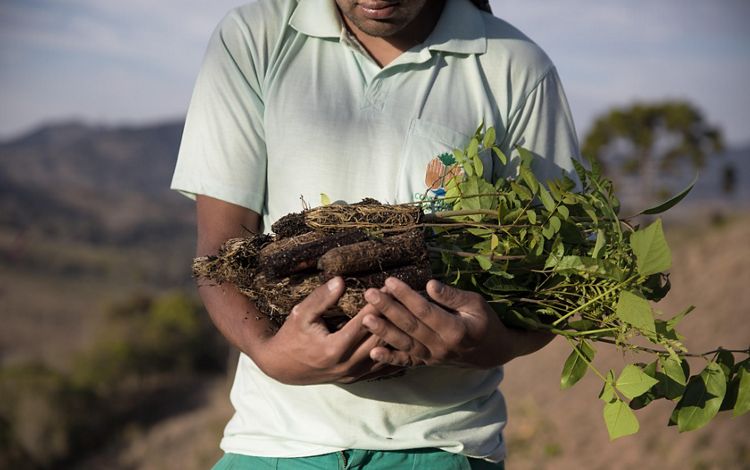
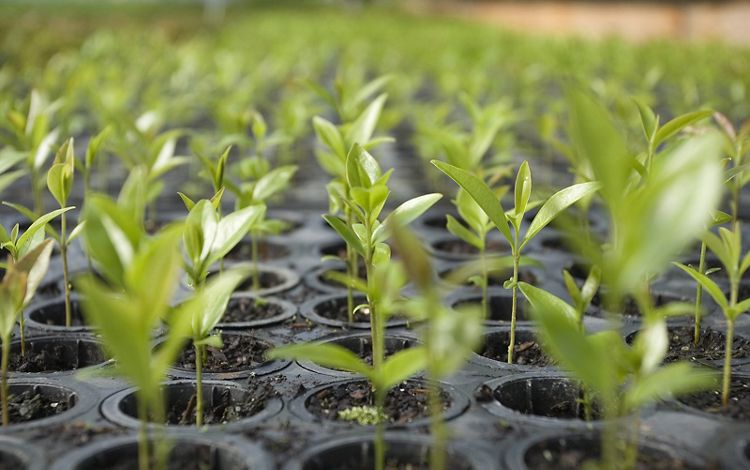
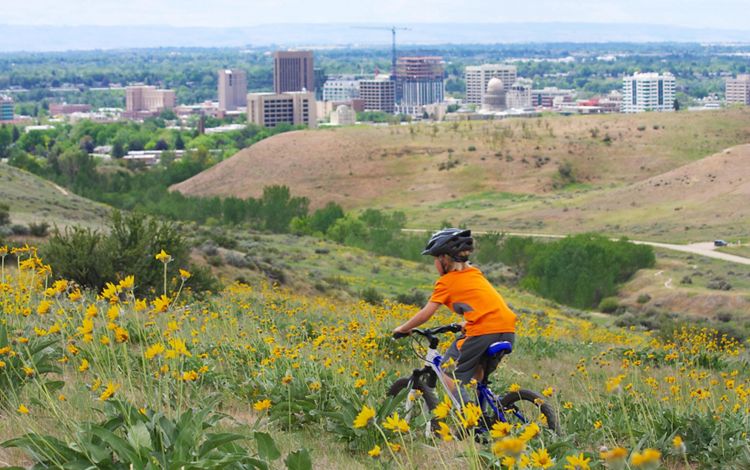
The science around reforestation as a climate solution is rapidly advancing—from a seminal study in 2017 that documented the high mitigation potential of global reforestation, to increasingly refined estimates of just how much carbon those forests might capture. But a key question remained—where on earth are we going to put all those trees?
The climate cooling power of reforestation depends heavily on how much new forest area we can gain. The greater the footprint of new forest, the greater the amount of carbon dioxide we can pull from the atmosphere. But we can’t just put trees any old place where forests used to be. Some of those places are cities and productive croplands.
The Reforestation Hub: A Tool for Mapping New Forests
A web-based tool called the Reforestation Hub maps out relatively low-cost and feasible options to restore forest across the contiguous U.S. Produced by The Nature Conservancy and American Forests, the hub captures different things we might care about, such as:
- Where did forests historically occur?
- Who owns the land and how is it used?
- Where might trees best control flood waters, improve the livability of our cities or help wildlife adapt to climate change?
- And how expensive is that land to reforest?
Once all those maps are stacked, it becomes possible to put a pin through all the locations that meet the criteria someone like you might care about.
There are many ways to slice and dice the data, but we focused on creating a menu of eight options that represent the less expensive and/or potentially more viable options among:
- shrublands;
- protected areas;
- pasture where forests historically occurred (not native grasslands);
- croplands with challenging soils;
- urban areas;
- floodplains;
- streamsides; and
- locations that support climate resilience of plants and animals.
In February 2023, the tool was newly updated with data layers (national land cover, floodplain, protected areas and carbon data) using new data from the USGS, U.S. Forest Service, TNC and others.
Explore the Hub
Reforestation Hub is a web-based tool produced by TNC and American Forests
Visit ReforestationHub.orgVast Opportunities to Restore Forests and Capture Carbon
The Reforestation Hub identifies up to 148 million acres of total opportunity for reforestation, an area the size of California and Washington put together, which could capture up to 535 million metric tonnes of carbon dioxide each year. We also estimate that about half of the mitigation (and a third of the area) is possible at $20 per metric ton of carbon dioxide or less, putting these within reach of prices on the voluntary and compliance carbon markets.
However, our main goal was not to put out a big number. It was to help people make the reforestation choices that best suit their community, state and county.
Want to find the places with the greatest carbon capture per acre? The places that are lowest cost? The places on public lands? The Reforestation Hub tool answers these questions, and many more. In particular, the Reforestation Hub lets you explore the results and visualize the outcome for every single county in the contiguous United States.
Quote
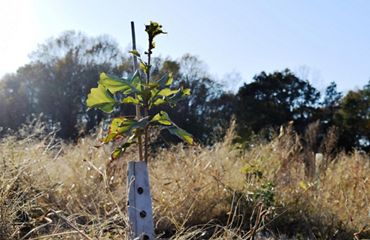
Want to find the places with the greatest carbon capture per acre? The places that are lowest cost? The places on public lands? The Reforestation Hub tool answers these questions, and many more.
Reforestation on Private Lands
Private landowners have a critical role to play in this effort to restore our forests. The Hub shows that 88% of the opportunity areas for reforestation in the contiguous US are on privately owned land. Planting trees on these lands could capture 492 million tonnes of carbon dioxide per year.
While letting forests regrow on their own can be a cheap and effective reforestation strategy, it may not always work. Sites that are highly degraded or far from seed sources, for example, may struggle to recover on their own. Planting trees can help to kickstart or speed recovery and can help establish the right species for current and future conditions.
Policies that lower the cost and barrier of reforestation for private landowners will help us seize this important opportunity to restore forests and capture carbon. And supporting reforestation is an investment in the future.
After all, there is something deeply satisfying about planting a tree, knowing that future generations will be able to clamber in the leaf boughs.
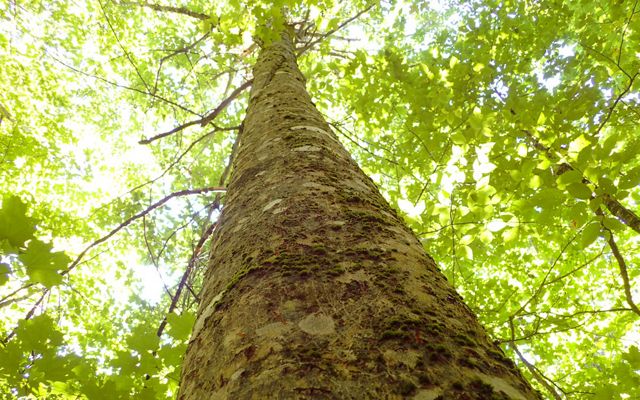
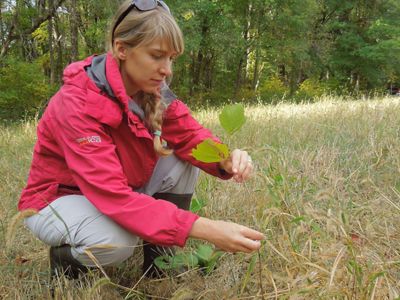
Hope for a Better Future
We have about a decade remaining to avoid the worst effects of climate change, but we are already feeling the negative consequences of rising temperatures associated with increasing flood risk and more severe wildfires. Some days this feels pretty overwhelming, but the last few years have taught us that there are challenges we need to face, and can address, when we pull together to find solutions.
Planting a tree is not the sole solution. We are absolutely going to need revolutions in our energy sector and massive reductions in greenhouse gas emissions. We need to keep forests as forests, improve our management of existing forests and pursue the many promising options within our agricultural sector, grasslands and wetlands. And new trees, with their air, water and shade benefits, are also part of the solution.
Planting a tree, or simply letting seedlings grow in our own backyards, represents something we can do now to reignite our hope for a better future.
Reforestation Hub
The data on the Reforestation Hub is updated periodically (once or twice a year) based on the latest data and science.
